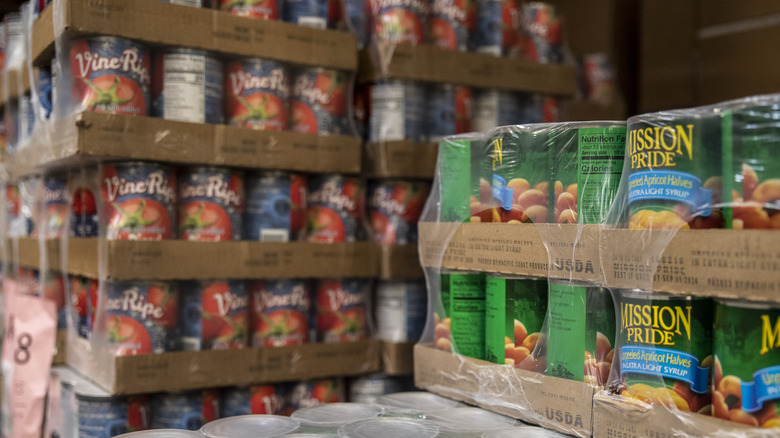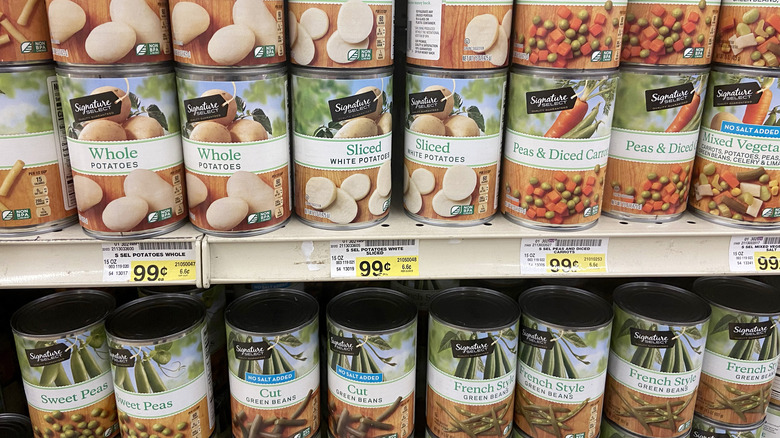Why Canned Goods Are Shaped Like Cylinders, According To Science
People have been around for a long time. There are reasons for nearly everything we do. However, many of those reasons have become lost to the ages, and we just continue doing things out of habit or tradition. A prime example is the can. Have you ever stopped to wonder why it is cylindrical? Is there a purpose behind the design, or is it just something that looked good and stuck?
There are several reasons why food, whether it is soda or soup or SpaghettiOs, is packaged in cans. Your first thought may be that cans are easy to hold or because they stack neatly since the bottoms of cans fit inside the tops. While these are solid reasons, plenty of other shapes are easy to grip and stack as well. The real reasons for a cylindrical design are based on science rather than aesthetics or even functionality. Therefore, they have remained unchanged since their invention in the early 1800s.
The two scientific reasons why cans are cylindrical
According to science, a can offers the most volume for the smallest amount of packaging. That means it takes less material to make a can than it does to make a box that holds the same amount of food or beverage. While a sphere is the most cost-effective packaging shape, it has an issue with rolling, so a cylinder is the next best, easy-to-manufacture option. Therefore, if a manufacturer can package its products in cans, it can save money.
The second reason is strength. Cans can withstand up to 90 pounds per square inch of pressure. That means carbonated beverages won't burst through the packaging if internal pressure builds. Also, there aren't the intrinsic weak points you'd have with a rectangular shape. On a cube, every edge is a weak point. Plus, the walls of a rectangle would need to be reinforced to be as strong as a can. The next time you grab a can from the shelf, take a minute to marvel at the 200 years of innovation that have gone into making the can such an effective and efficient design.

